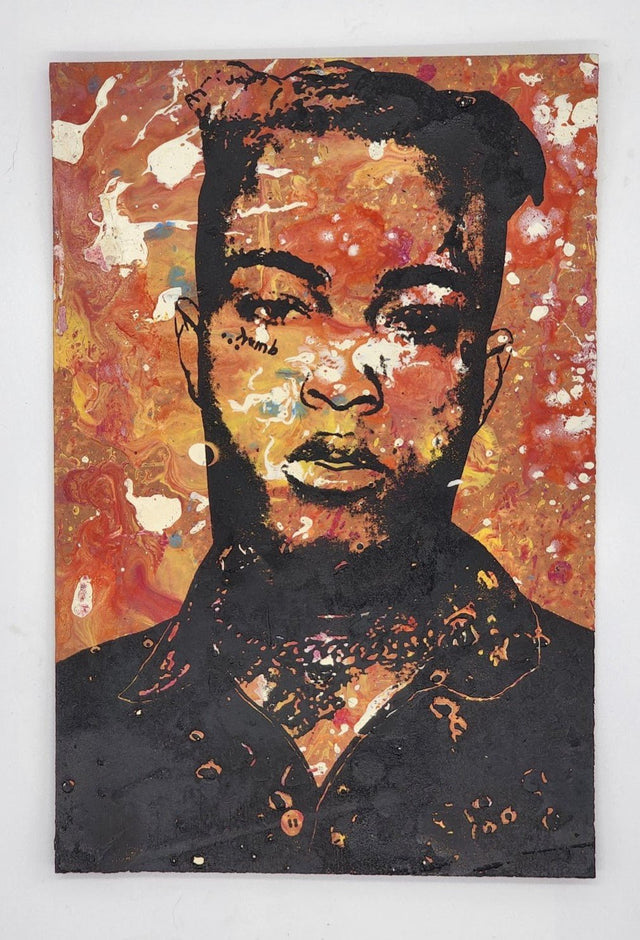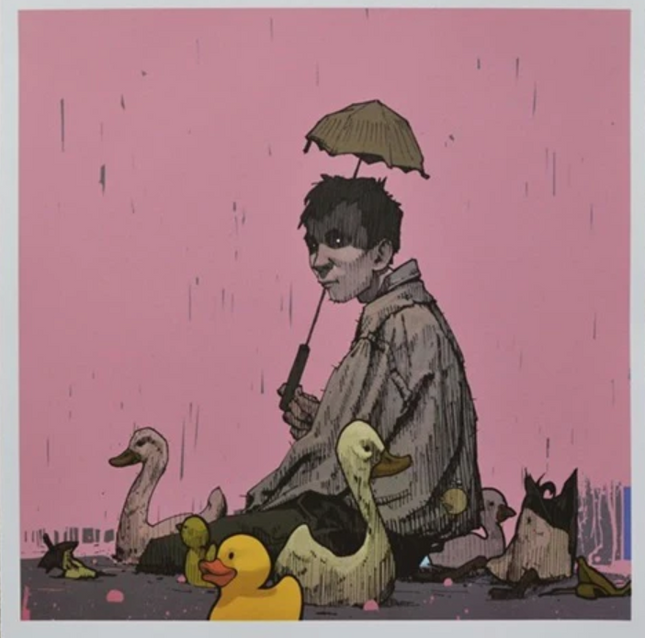
Man Male
-

Sainer- Etam Cru Galimatias AP Silkscreen Print by Etam Cru x Sainer x Bezt
Galimatias AP Silkscreen Print by Etam Cru x Sainer x Bezt Artist Proof Hand-Pulled Screen Print on Deckled Coventry Rag Fine Art Paper Limited Edition Pop Street Artwork & Graffiti. AP Artist Proof 2015 Signed & AP Marked Limited Edition Run Artwork Size 29x30 Galimatias AP: A Unique Silkscreen Collaboration by Etam Cru, Sainer, and Bezt Galimatias AP is a significant work within the Street Pop Art and graffiti Artwork movement, born from the collaborative genius of Etam Cru, composed of Sainer and Bezt. This Artist Proof silkscreen print from 2015 showcases the unique fusion of each artist's distinctive style, hand-pulled on Coventry Rag fine art paper. Measuring 29x30 inches, the print is a substantial piece that commands attention with its intricate details and evocative imagery, amplified by the tactile quality of the deckled paper edge. Artistry and Authenticity in Galimatias AP Every Artist's Proof is a testament to a print's authenticity and exclusive nature, and Galimatias AP is no exception. The piece is marked 'AP' and signed by both Sainer and Bezt, indicating that it is part of a limited edition run. This marking guarantees the print's authenticity and shows that it is among the first pulled from the series, often retained by the artists or used for exhibition purposes. Craftsmanship in Screen Printing The hand-pulled screen printing process used for Galimatias AP is an art form requiring meticulous attention to detail. This traditional technique, applied to a modern artistic vision, produces a print with depth and vibrancy unachievable through digital means. The 7-color process employed in Galimatias AP and the use of high-quality Coventry Rag paper ensures that the artwork's colors are rich and the imagery is sharp, with each layer contributing to the overall narrative and aesthetic. Symbolism in the Work of Etam Cru Galimatias AP's imagery is rich with symbolism, a hallmark of Etam Cru's work. The juxtaposition of the fantastical elements with the mundane creates a surreal atmosphere open to interpretation, inviting the viewer to uncover the narrative woven into the visual composition. This piece reflects the duo's approach to Street Pop Art and graffiti Artwork, where whimsical and often introspective storytelling is at the forefront. Collectibility and Impact of Limited Editions The limited edition nature of Artist Proofs like Galimatias AP contributes to their collectibility and impact within the art community. Collectors and enthusiasts seek out these prints for their exclusivity and connection to the artists' original vision. As an AP, Galimatias is particularly coveted, its value enhanced by its limited quantity and the notoriety of its creators within the Street Pop Art and graffiti Artwork scene. Legacy of Etam Cru in Street Pop Art & Graffiti The legacy of Etam Cru in the Street Pop Art and graffiti Artwork movement is solidified through works such as Galimatias AP. Sainer and Bezt, through their collaborative efforts, have pushed the boundaries of street art, challenging perceptions and encouraging a deeper appreciation for the genre. Their influence is evident in how their prints, minimal editions, continue to resonate and inspire, securing their place in the annals of contemporary art.
$951.00


